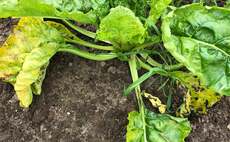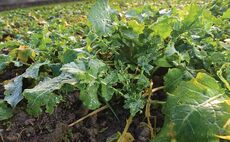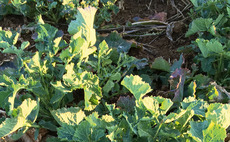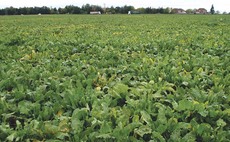Neonicotinoids
Arable
It is looking increasingly likely that the virus level forecast for the end of February 2021 will be below the threshold for triggering the Cruiser SB (thiamethoxam) derogation in sugar beet, says BBRO.
Arable
Early aphid migration, spring drought and cercospora infection at levels never seen before led to the perfect storm for sugar beet crops in 2020.
Arable
Winter seems to be progressing in the normal way, with December being suitably wet and the last field destined for winter wheat will now be planted with spring wheat.
Arable
The Government has granted an application for emergency use of a neonicotinoid seed dressing on sugar beet in 2021.
Arable
Weather was a much bigger factor than cabbage stem flea beetle in the poor performance of last season’s winter OSR, according to the latest ADAS Oilseed YEN analyses.
Arable
NFU Sugar has rejected claims made by environmental campaigner, George Monbiot, that it was ‘secretly lobbying the Government to allow neonicotinoid pesticides to be reintroduced after Brexit’.
Arable
The European Food Safety Authority (EFSA) is to assess a number of emergency authorisations granted by Member States for the use of neonicotinoids in sugar beet in 2020.
Arable
Oilseed rape plantings have fallen to their lowest level since 1986 at 318,000 hectares, according to AHDB’s Early Bird planting survey.
Arable
Despite good oilseed rape establishment across much of the country this season, growers should be alert to the possibility of significant larval damage in the spring, as cabbage stem flea beetle pressures may not have fallen.
Arable
The sugar industry has submitted an application for emergency authorisation of Cruiser SB (thiamethoxam) as a neonicotinoid seed treatment, to be used to protect the English sugar beet crop in 2021.

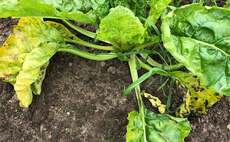
 16 February 2021
•
1 min read
16 February 2021
•
1 min read
